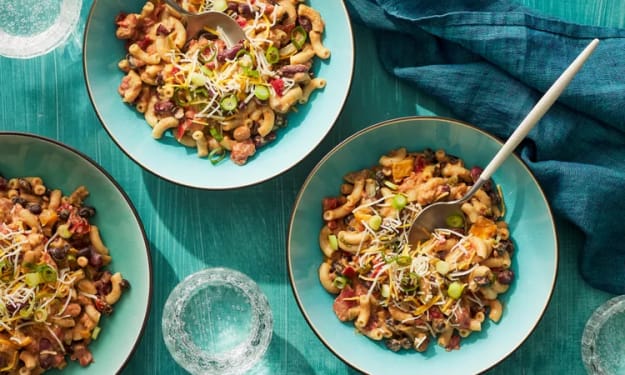Eating for Insulin Resistance: 5 Nutrition Tips
From a Certified Holistic Nutritionist with insulin resistance

Nutritionists and other health professionals are not immune to health struggles. I’ve been on an emotional rollercoaster ride of a health journey the past few years, as I’ve dug deep to uncover the root causes of things that haven’t felt right or been working properly within my body. Among these issues have been irregular menstrual cycles, unexplained weight gain, extreme changes in energy levels and mood, and worsened anxiety.
Of course, some of these symptoms may be a result of major stress induced by events beyond our control, such as the pandemic, horrific news reports of violence and hate crimes, and the sense of economic uncertainty, in addition to my own personal trials and tribulations. Deep down, however, I knew that something else was going on. Despite leading a generally healthy lifestyle (after all, I am a nutritionist—I know what to do!), things simply weren’t adding up.
Finally, after working with several healthcare practitioners, getting my entire body mass worth of bloodwork done along with other testing, it was determined that I have moderate non-alcoholic fatty liver (NAFLD), insulin resistance, and a hormonal imbalance.
Everything I’ve been experiencing and have been diagnosed with also points toward a diagnosis of polycystic ovarian syndrome (PCOS), a condition in which a woman’s ovaries produce excess amounts of androgen hormones, wreaking all kinds of health havoc. PCOS is a strange condition, in the sense that there’s no definitive test for diagnosis, however if a woman checks off so many boxes of symptoms or conditions that are associated with PCOS, she “qualifies” (which makes it sound like something exciting, like a grant or a shiny new job position, doesn’t it?).
Insulin resistance has been shown to be closely associated with both NAFLD and PCOS, and was likely the leading cause of my irregular energy levels, struggles with mood and wellbeing, and my weight gain. I’m also predisposed to insulin resistance and ultimately diabetes through my family history, so it's imperative that I take preventative measures regardless.
Needless to say, this was all enough to really ignite intentional and meaningful change in my diet and lifestyle. Finally, I understood the specific approaches that would help me feel better, as opposed to the trial and error with the little supporting evidence that I was working with prior.
Leveraging my own knowledge and working with my Naturopathic Doctor, I’ve made simple yet effective changes to my diet in the last couple of months that already have me feeling better. My energy levels have been more stable, I’ve had three consecutive regular menstrual cycles, and I’ve shed a few pounds (not something I’m focusing on, but since I’ve been told by multiple healthcare professionals that weight loss will help manage PCOS and reverse my NAFLD, it’s a welcomed side effect).
Before we get to the good stuff, a disclaimer: The information in this article is for educational purposes only and is not a substitute for expert professional care from a health professional, and should not be used for diagnosing or treating any disease or condition.
Here are the 5 nutrition tips for managing insulin resistance that have helped me:
1. I eat one serving of grains per day, earlier in the day if possible, and I prioritize whole grains.
I love grains, but unfortunately my body is on a different page. There are a lot of articles online citing research which suggests that whole-grain intake has a positive effect on insulin sensitivity. This may be true, but every body is different, and the key really is that the grains be whole, minimally processed, and work well within the body of the individual.
Generally, I simply feel better when I consume fewer grains throughout the day, when my chosen grains are as whole and natural as possible, and when they’re eaten earlier in the day. More highly processed grains, such as bread and pasta, tend to spike blood sugar more quickly. The steeper the rise in blood sugar, the more insulin the pancreas produces.
The reason behind consuming grains earlier in the day is that the body is more likely to make use of their energy the rest of the day, as opposed to in the evening as we’re winding down to sleep. This was challenging at first, as so many of my go-to evening meals focused on grains, such as pasta and rice dishes. As my Naturopath reminds me, grains are guest appearances rather than the stars of the meal. Feeling the difference in my body and experimenting with recipes has made this change a lot easier.
2. I eat veggies and protein first, then carbs.
Studies have shown that the order in which foods are eaten makes a difference in post-meal glucose and insulin levels. I can attest to this because I can literally feel the difference in my energy levels immediately and a few hours after a meal.
As my Naturopath explains it, the veggies and protein act as a sponge or net of sorts in the digestive tract as they digest more slowly than carbohydrates. This results in more stable blood sugar and insulin levels, and more sustained satiety and post-meal energy.
For some meals it’s difficult to eat things in a particular order, such as sandwiches, pizza, bowls or soups. But it’s best to have a mentality of flexibility and forgiveness, since not every meal is going to be perfect and I can only do my best. When I’m preparing food at home, I have greater control over the components of my meals and how I choose to eat them.
If I’m going to treat myself to something carb-heavy, such as a cupcake, if possible I try to snack on veggies, nuts or other sources of protein first. It’s not always convenient, but the fact that I feel better after motivates me to plan ahead.
3. I pay attention to learn which foods simply don’t work for me.
I can’t do oatmeal. It doesn’t matter how much nut butter, protein powder or other sources of protein I put in it. It doesn’t matter if it’s steel cut. I crash within an hour of eating it, every single time. Same with pancakes. It helps a little if I have an egg or two before eating the pancakes, and if there’s plenty of fresh fruit and some nuts and seeds on top, but generally I just don’t feel great after, so they’re more of a treat when I’m craving them.
Eggs for breakfast, on the other hand, work very well for me. I find I tend to prefer savoury for breakfast anyway, so I’ll often do a scramble with olive oil and veggies, or an omelette with veggies and occasionally cheese, often with avocado and fruit on the side. Sometimes I’ll have a piece of toast with it as a half serving of grains, but generally I find I don’t need it as I feel satisfied and energized for several hours after.
Potatoes can be tricky for those with insulin resistance, however I find I handle them a lot better with protein, veggies and healthy fats than other starches like bread and pasta.
4. I minimize snacking between meals and after dinner.
This one I’ve found quite easy to do, since loading up on veggies, protein and healthy fats, with fresh fruit and small amounts of whole grains, keeps me full longer. In the last few months, I’ve found myself focusing on other things and not thinking about food for at least a few hours once my true hunger naturally starts to kick in again.
Snacking keeps the insulin pumping at more regular intervals, whereas having at least a few hours between meals gives the body a break. Irregular blood sugar levels can lead to an increase in the desire to snack, so tackling the other changes listed above first may help reduce this urge.
It’s also important to note that most of my workdays are fairly sedentary, so I naturally have less of an energy need than someone who has a more labour-intensive job. On days that I’m more active, like if I’m going for a long hike, I’ll be prepared with snacks such as nuts or my favourite Love Good Fats bars (not affiliated, just a big fan).
As mentioned, in the evening the body is less likely to burn consumed energy as we tend to be more sedentary and go to sleep sometimes just a few hours later, so for this reason I snack after my evening meal if I’m truly hungry. Again, flexibility is important, so some nights I have a snack because I want to. I’m simply more mindful about it than I used to be.
5. I move my body after meals when I can.
As stated in this article on healthline.com, “A study published today in Diabetes Care found that three short walks each day after meals were as effective at reducing blood sugar over 24 hours as a single 45-minute walk at the same moderate pace.”
Going for a walk might not always be convenient or possible, so I try to get in another form of movement like putting on my favourite song and dancing. For many people, often myself included, dinner tends to be the heaviest meal of the day. So if I’m going to squeeze in a walk after just one meal in the day, I aim for the evening.
Summary
In summary, this article references some evidence behind what has been recommended to me by healthcare professionals and what I’ve learned through my own education and training. These tips are what have made a difference for me personally, and is for educational purposes only. Check with your healthcare practitioner before making major changes to your diet and lifestyle. Explore to see what works for you, and remember to keep a mindset of flexibility and forgiveness. There is no perfect diet and food is meant to fuel both our cells and our souls. ♡
If you’re looking for one-on-one support, I’m here for you.
Don’t hesitate to get in touch so that we can design a personalized nutrition and lifestyle plan to help you achieve your goals.
About the Creator
Erin R. Wilson
Reiki practitioner, learning intuitive medium, modern day witch & nutritionist | Also a designer & illustrator: erinracheldesigns.com






Comments
There are no comments for this story
Be the first to respond and start the conversation.